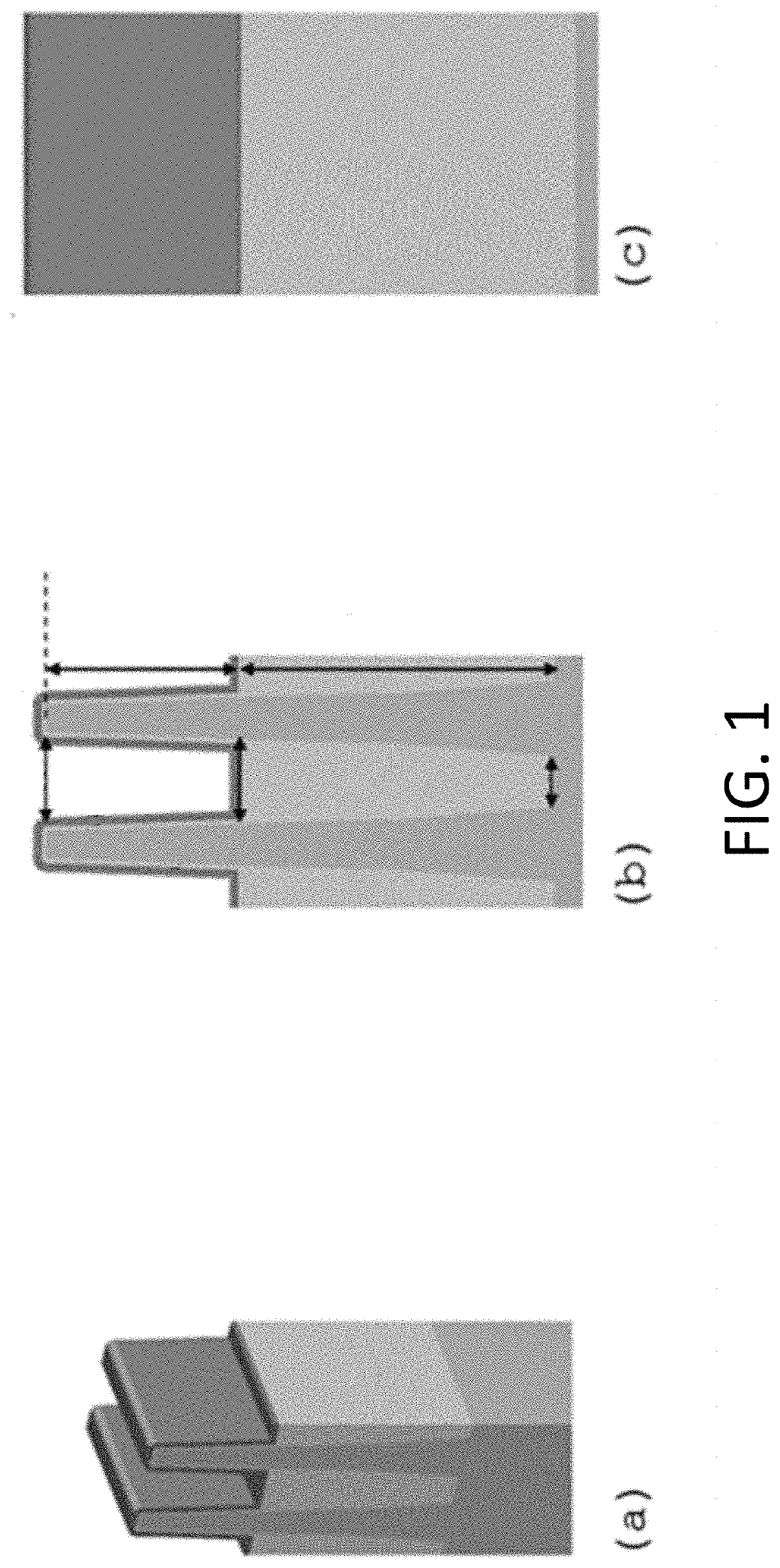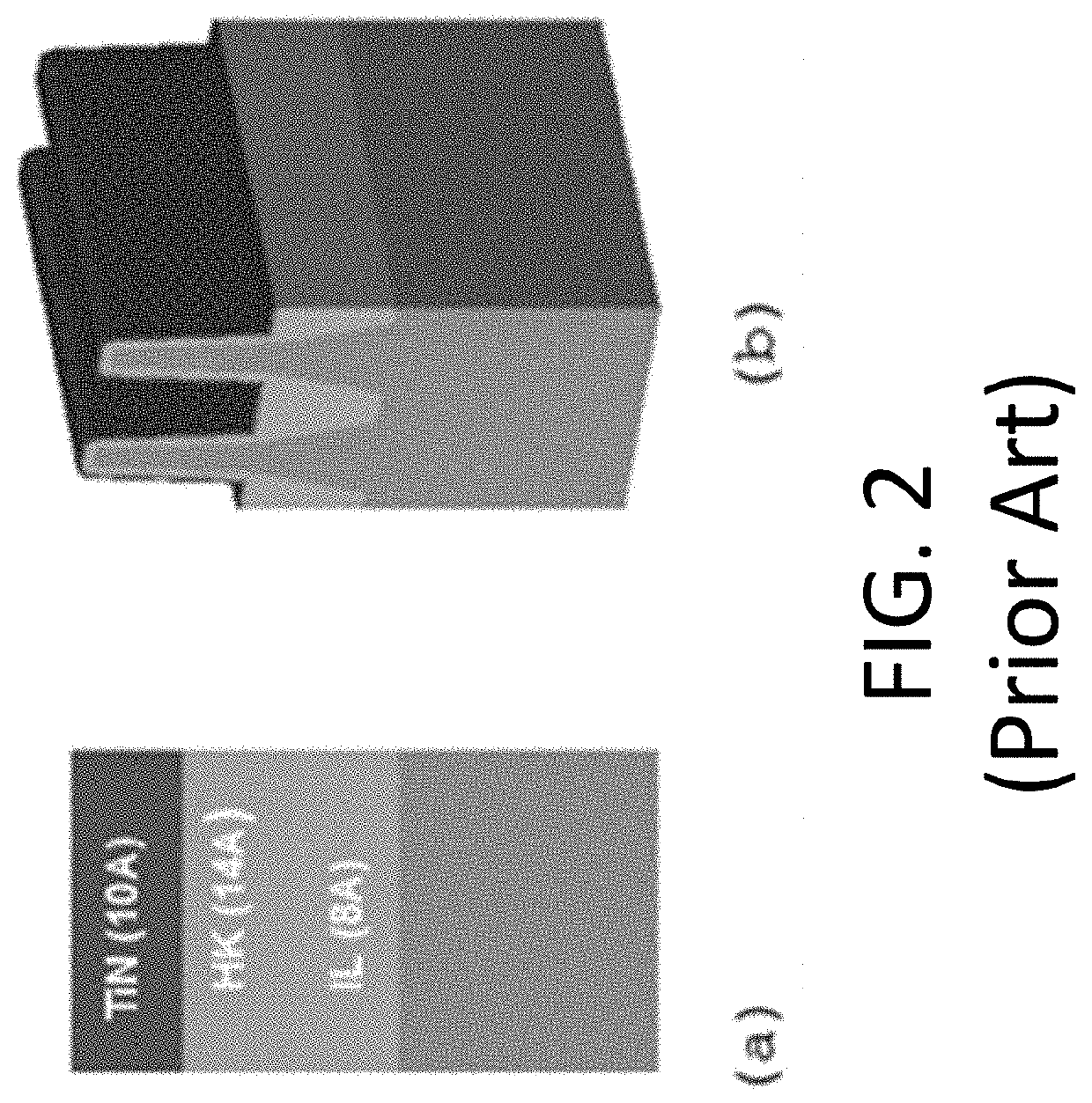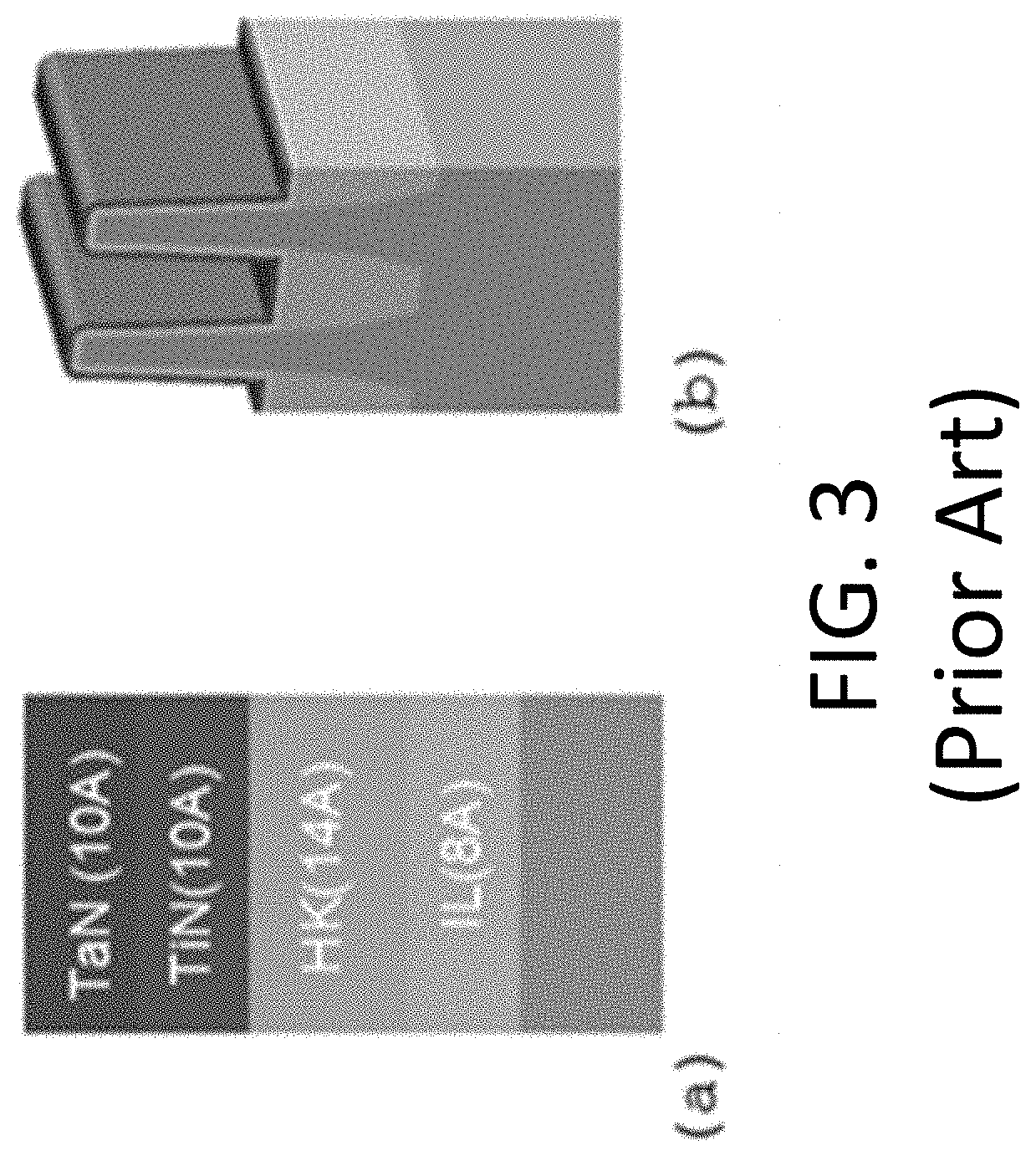Measuring Thin Films on Grating and Bandgap on Grating
a technology of grating and thin film, applied in the direction of semiconductor/solid-state device testing/measurement, instruments, semiconductor devices, etc., can solve the problems of complex formation process of high-k metal gate film, insufficient x-ray, interfacial and crystalline defects
- Summary
- Abstract
- Description
- Claims
- Application Information
AI Technical Summary
Benefits of technology
Problems solved by technology
Method used
Image
Examples
example 1
[0140]In an example, the first effective medium dispersion model replaces five materials in a stack: IL, HK, TiN, TaN and TaL. By floating the first effective medium thickness and eventually the first effective medium Bruggeman effective medium approximation (BEMA) fraction, the first effective medium accounts for all process variation of the five layers together. Thus, the first scatterometry model floating parameters are reduced from the initial twelve parameters to only seven. Using first scatterometry model, the top TiN (8 A) film on grating was accurately measured and all success criteria were met including the robustness test. The top TiN (8 A) thickness was forwarded to another model.
[0141]The second effective medium dispersion model replaces four materials: IL, HK, TiN and TaN. By floating the second effective medium thickness and eventually the second effective medium BEMA fraction, the second effective medium accounts for all process variation of the four films together. T...
example 2
[0144]To validate the within layer feedforward technique in another example, three DOE wafers were designed and measured with the scanned AOI RPRC. Three sites per wafer were selected for the reference measurement TEM. FIG. 8 summarizes the FOG vs. TEM linearity results for TiN, TaL, and TaN using the SSDF method described in FIG. 6. In addition to the accuracy, the SDFF method was tested for precision GRR and robustness. Both R2 and Slope passed the customer requirement for linearity.
[0145]FIG. 9 shows the significance of the results of the SSDF method and compared with the old method of “all floating.” The GRR and robustness tests are more liable to being affected by the multiple films correlation. Both GRR and Robustness passed the customer specifications.
[0146]Successful FOG layers cases including some of the EM dispersion (measured using the Scanned AOI RPRC and used in the libraries) are presented below.
[0147]FIG. 2(a) shows the cap layer film stack and 2(b) shows the FOG cap ...
PUM
| Property | Measurement | Unit |
|---|---|---|
| sensitivity | aaaaa | aaaaa |
| wavelengths | aaaaa | aaaaa |
| wavelengths | aaaaa | aaaaa |
Abstract
Description
Claims
Application Information
 Login to View More
Login to View More - Generate Ideas
- Intellectual Property
- Life Sciences
- Materials
- Tech Scout
- Unparalleled Data Quality
- Higher Quality Content
- 60% Fewer Hallucinations
Browse by: Latest US Patents, China's latest patents, Technical Efficacy Thesaurus, Application Domain, Technology Topic, Popular Technical Reports.
© 2025 PatSnap. All rights reserved.Legal|Privacy policy|Modern Slavery Act Transparency Statement|Sitemap|About US| Contact US: help@patsnap.com



